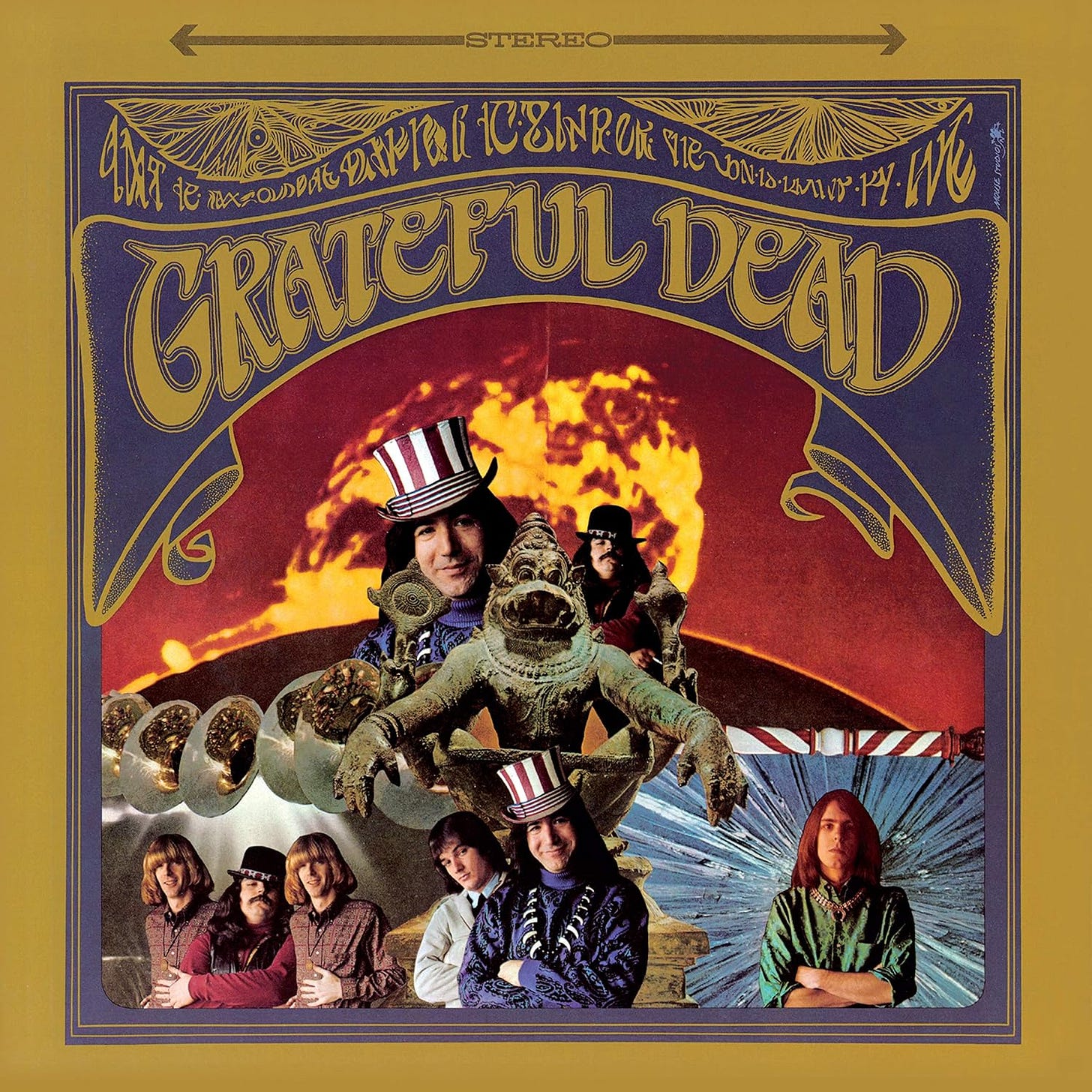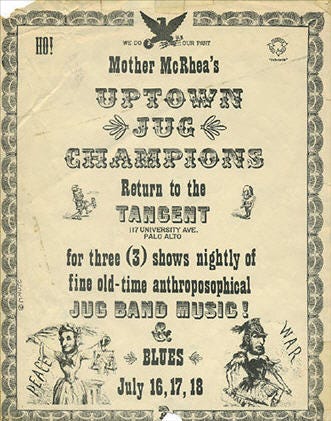The Origins of the Grateful Dead
Bob Weir’s 1996 Recollections of Jerry, Jorma, and Psychedelic San Francisco
Note to readers: In 2022 I posted a podcast featuring the audio of this interview: Bob Weir: Psychedelia and the Birth of the Grateful Dead (Audio). Here, for those who’d rather read than listen, is a print transcription
Bob Weir’s long, strange trip with the Grateful Dead began on New Year’s Eve, 1963, when he followed the sound of a banjo into a Palo Alto music store. There, by chance, he met bluegrass veteran Jerry Garcia, waiting for a student. The 16-year-old Weir played folk guitar, and the two enjoyed a marathon jam session. They decided to form an acoustic band – Mother McCree’s Uptown Jug Champions – with Ron “Pigpen” McKernan, who doubled on harmonica and drums. Inspired by the Beatles, the musicians switched to electric instruments in 1965, changed their name to the Warlocks, and brought in Bill Kreutzmann and Phil Lesh on drums and bass. The Warlocks served as the house band at the first of Ken Kesey’s Acid Tests. The late Owsley Stanley, a pioneer in the manufacturing of then-legal LSD, bankrolled the band, which Garcia renamed the Grateful Dead.
During the early days, the musicians shared a house in San Francisco’s Haight-Ashbury district and, as Weir describes below, accelerated their musical explorations with LSD. By the time they recorded their 1967 debut album, Weir contends, they’d moved past the psychedelic stage.
The Grateful Dead, of course, went on to become the most beloved and enduring of the seminal San Francisco bands. For three decades, they delighted Dead Heads – the most avid and loyal family of fans in rock and roll history – with extended concerts highlighted by inspired improvisation. Along the way, several members had successful side projects. Bob’s first solo release, Ace, came out in 1972 and was the source of the concert fave “Playing in the Band.” As the 1970s rolled on, Weir also toured and recorded with Kingfish and the Bob Weir Band. In 1981 he stepped out again with Bobby and the Midnites, playing alongside legendary fusioneers Billy Cobham and Alphonso Johnson.
The Grateful Dead’s ride lasted until the 1995 death of Jerry Garcia. For a while, Weir and band mates carried on as The Other Ones. When this disbanded, Bob devoted his musical energy to RatDog; their 2000 album Evening Moods is a good representation of their sound. In 2008 and 2009, Weir and other members of the Grateful Dead reunited to tour as The Dead. Since then, Bob Weir and Phil Lesh have continued to perform.
In October 1996, I began work on a Guitar Player magazine cover story called “Psychedelia.” Bob agreed to do an interview to help provide background info. Some of his quotes made it into the article, but the interview itself remained untranscribed until now. Here is our complete conversation:
###
I’d like to get your input on the psychedelic scene in San Francisco in the 1960s.
You bet!
Is it fair to say that within about a six-month period, musicians in San Francisco went from playing folk and jug music to full-blown psychedelic music?
Pretty much, yeah.
What caused that to happen?
Well, number one, the Beatles, followed shortly by the Rolling Stones. Mother McCree’s Uptown Jug Champions started on New Year’s Eve [of 1963]. And I guess it was January or February of ’64 that the Beatles hit. I won’t say this was the death knell for the folk craze, but it certainly co-opted the folk craze. It was not too long before everybody pretty much had converted to electric guitar. Let’s see. The Beatles hit in February, and our jug band, Mother McCree’s Uptown Jug Champions, was beginning to electrify by November or December of ’64.
Keep reading with a 7-day free trial
Subscribe to Talking Guitar ★ Jas Obrecht's Music Magazine to keep reading this post and get 7 days of free access to the full post archives.





